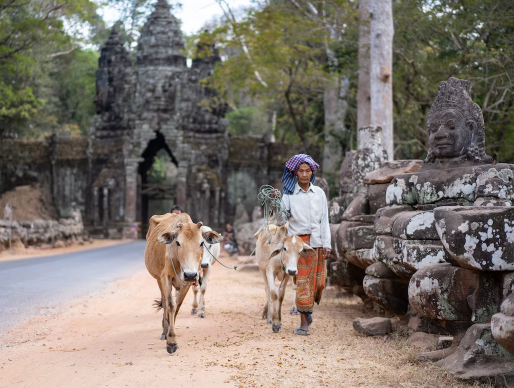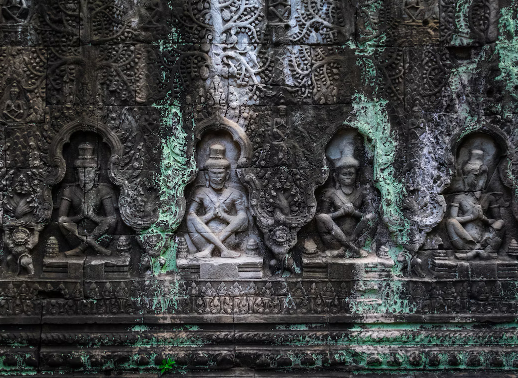Towering above Cambodia’s lush treetops is an ancient stone city. Angkor was once the capital of the Khmer Empire until it fell into ruins. But this place is not a relic of a bygone era. It is a living heritage site where the Khmer people continue to uphold their culture and traditions.

Located about eight kilometers north of Siem Reap, Angkor is home to the famous Angkor Wat temple. The building was built in the 12th century as a Hindu place of worship, but converted to Buddhism shortly after its completion. Covering an area of 160 hectares, Angkor Wat is the largest religious complex in the world and appears on the Cambodian flag. Every year, more than 200 million people from all over the world come to visit this iconic temple.
The origins of Angkor Wat have long been the subject of debate. Legend has it that the massive complex was built overnight after the god Indra ordered its construction. But according to inscriptions, the project took 37 years to complete and required the help of over 300,000 workers and 6,000 elephants.
While the Khmer Empire collapsed in the 15th century, Angkor itself stood the test of time. During the Khmer Rouge communist rule in the 20s of the 70th century, Cambodia suffered huge losses and Khmer culture almost collapsed. Angkor Wat has survived years of destruction and is now the main monument for locals to celebrate its heritage. Here, ethereal Khmer artists wearing golden headdresses continue to perform traditional fairy dances.

Angkor is a paradise for Khmer architecture, with thousands of sandstone structures layered on top of each other and full of artistic details. Marvel at the bas-reliefs carved into the temple walls depicting Hindu deities and historical events, or explore giant pyramids covered in grass.
Although Angkor is famous for its man-made architecture, nature also showcases her craft here. At Tasong Temple, the roots of the fig tree are braided into the doorway, while the ruins of the Holy Kenji Temple appear to be entangled in the web of a silk cotton tree. Gibbons’ gloomy songs echo through buildings, and scruffy langurs swing around the canopy.
Centuries after its completion, Angkor still leaves those who wander through its holy sites in awe. Travel to the heart of Cambodia and discover a place full of mystery.
